Engineering Conference (TFEC)
Conference Program
Tentative draft program
If you have questions or comments, please send your queries to nozalp by February 17th, 2018. After that day we take no more considerations to make any program adjustments.
TFEC18 Venue.pptx (7.9Mb)
TFEC2018 Conference Program.pdf (2.06Mb)
Plenary speakers
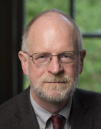
Gretar Tryggvason
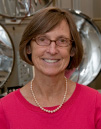
Jane Davidson
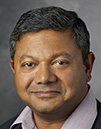
Arun Majumdar
Affiliation: Department Head and Charles A. Miller, Jr. Distinguished Professor, Department of Mechanical Engineering, Johns Hopkins University
Title: Direct Numerical Simulations of Complex Multiphase Flows
Abstract: Predicting the behavior of multiphase flows is critical for many industrial processes. The unsteady turbulent motion of two or more phases poses formidable challenges and traditional modeling of the large scale or averaged flow has therefore relied mostly on experimental results, supplemented by scaling analysis and the application of elementary conservation laws. Increasing computational power has lead to models of growing complexity, but industrial model generally include unresolved closure terms that must be prescribed. The ability to conduct direct numerical simulations (DNS), where the full governing equations for the fluid motion and the evolution of the phase boundary are solved for a large range of length and time scales is providing us with unprecedented insight and massive amount of data that open up new opportunities for modeling. Results for relatively simple multifluid and multiphase systems with bubbles and drops in turbulent flows are now available, but new challenges are emerging. First of all, DNS of very large systems are yielding enormous amount of data that, in addition to providing physical insights, opens up new opportunities for the development of lower order models that describe the average or large-scale behavior. Recent results for bubbly flows and the application of statistical learning tools to extract closure models from the data suggest one possible strategy. Secondly, success with relatively simple systems calls for simulations of more complex problems. Multiphase flows often produce features such as thin films, filaments, and drops that are much smaller than the dominant flow scales and are well-described by analytical or semi-analytical models. Recent efforts to combine semi-analytical models for thin films using classical thin film theory, and to compute mass transfer in high Schmidt number bubbly flows using boundary layer approximations, in combination with fully resolved numerical simulations of the rest of the flow, are described.
Bio: Gretar Tryggvason is the Charles A. Miller, Jr. Distinguished Professor at the Johns Hopkins University and the head of the Department of Mechanical Engineering. He received his PhD from Brown University in 1985 and was on the faculty of the University of Michigan in Ann Arbor until 2000, when he moved to Worcester Polytechnic Institute as the head of the Department of Mechanical Engineering. Between 2010 and 2017 he was the Viola D. Hank professor at the University of Notre Dame and the chair of the Department of Aerospace and Mechanical Engineering. Professor Tryggvason is well known for his contributions to computational fluid dynamics; particularly the development of methods for computations of multiphase flows and for pioneering direct numerical simulations of such flows. He served as the editor-in-chief of the Journal of Computational Physics 2002-2015, is a fellow of APS, ASME and AAAS, and the recipient of several awards, including the 2012 ASME Fluids Engineering Award.
Affiliation: Ronald L. and Janet A. Christenson Chair in Renewable Energy, Professor of Mechanical Engineering, University of Minnesota
Title: Solar After Dark
Abstract: The detrimental effects of our reliance on petroleum are evident to scientists and most politicians. Engineers are challenged as never before to solve problems of unparalleled scientific complexity toward development of econmically-viable renewable energy technologies. The solar energy resource is not limited. Yet solar energy provides less than 2% of global energy consumption. My students and I are working on several fronts to make solar energy more accessible. This talk will discuss progress in the developement of thermal energy storage for solar heating and electricity and production of renewable fuels via thermochemical processes that use concentrated solar radiation as the source of process heat.
Bio: Jane Davidson is Professor of Mechanical Engineering at the University of Minnesota and holds the College of Science and Engineering Ronald L. and Janet A. Christenson Chair in Renewable Energy. She received the B.S. and M.S. degrees in Engineering Mechanics from the University of Tennessee and Ph.D. in Mechanical Engineering from Duke University. Prior to joining the faculty at the University of Minnesota in 1993, she was a faculty member at the University of Delaware and Colorado State University. Her current areas of research include solar thermo-chemical cycles to produce fuels, thermal storage, advanced polymer and additive manufactured heat exchangers, and building integrated solar. She is past Editor of the ASME Journal of Solar Energy Engineering. Her efforts in research and engineering education have been recognized with the 2012 ASME Frank Kreith Energy Award, the University of Minnesota 2009 Ada Comstock Award, the 2007 American Solar Energy Society Charles Greeley Abbot Award, the 2005 University of Minnesota Distinguished Women Scholar Award in Science and Engineering, the 2004 ASME John I. Yellott Award, and the 2000 John Tate Award for Excellence in Undergraduate Advising. She has co-authored 2 books, 6 book chapters and 160 archival journal publications. Her work has been featured on PBS Tech Talk, PBS NewsHour and the Weather Station. She is a Fellow of ASME and ASES.
Affiliation: Director, Precourt Institute for Energy, Jay Precourt Professor, Professor of Mechanical Engineering and of Photon Science and, by courtesy, of Materials Science and Engineering, Stanford University
Title: Thermochemical Transformations for a Sustainable Energy Future
Abstract: There are several reactions and chemical transformations that are critically important for a sustainable energy future. These include, but are not limited to, the following:
- The ability to split water [H₂O → H₂ + ½O₂] to produce hydrogen (H₂) is a vitally important reaction in energy science with broad applications to store intermittent solar and wind electricity, as a transportation fuel, as a reducing agent to convert CO₂ into organics including fuels, and to decarbonize the existing petrochemical and fertilizer industries.
- The ability to reduce CO₂ to CO [CO₂ → CO + ½O₂], which can then be combined with H₂ to synthesize various chemicals and fuels, thus offering a pathway to utilize CO₂ and create value.
- The ability to convert CO₂ directly into methanol [2CO₂ + 4H₂ → 2CH₃OH + O₂], which is highly energy dense fuel at room temperature that can be transported easily.
- The ability to directly transform CH₄ to CH₃OH and C₂H₆.
These reactions can be achieved using four possible pathways: electrochemical, photochemical, biochemical and thermochemical. A key requirement, however, of finding chemical transformation pathways for these reactions is that they can be eventually scaled to the 100s of Milliontonne to Gigatonne level annually (1011-1012 kg/yr) worldwide. Without this level of scaling, it would be difficult to have impact on global energy systems and greenhouse gas emissions.
This talk will give an overview of the challenges and opportunities and then focus on the science of the thermochemical pathway to address them, which is the only known pathway that has reached these scales worldwide.
Bio: Dr. Arun Majumdar is the Jay Precourt Professor at Stanford University, a faculty member of the Departments of Mechanical Engineering and Materials Science and Engineering (by courtesy) and co-director of the Precourt Institute for Energy, which integrates and coordinates research and education activities across all seven Schools and the Hoover Institution at Stanford.
Dr. Majumdar's research in the past has involved the science and engineering of nanoscale materials and devices, especially in the areas of energy conversion, transport and storage as well as biomolecular analysis. His current research focuses on using electrochemical reactions for thermal energy conversion, thermochemical water splitting reactions to produce carbon-free hydrogen, understanding the limits of heat transport in nanostructured materials and a new effort to re-engineer the electricity grid.
In October 2009, Dr. Majumdar was nominated by President Obama and confirmed by the Senate to become the Founding Director of the Advanced Research Projects Agency - Energy (ARPA-E), where he served till June 2012 and helped ARPA-E become a model of excellence for the government with bipartisan support from Congress and other stakeholders. Between March 2011 and June 2012, he also served as the Acting Under Secretary of Energy, enabling the portfolio that reported to him: Office of Energy Efficiency and Renewable Energy, Office of Electricity Delivery and Reliability, Office of Nuclear Energy and the Office of Fossil Energy, as well as multiple cross-cutting efforts such as Sunshot, Grid Tech Team and others that he had initiated. Furthermore, he was a Senior Advisor to the Secretary of Energy on a variety of matters related to management, personnel, budget, and policy.
After leaving Washington, DC and before joining Stanford, Dr. Majumdar was the Vice President for Energy at Google, where he created several energy technology initiatives, especially at the intersection of data, computing and electricity grid, and advised the company on its broader energy strategy.
Prior to joining the Department of Energy, Dr. Majumdar was the Almy & Agnes Maynard Chair Professor of Mechanical Engineering and Materials Science & Engineering at University of California–Berkeley and the Associate Laboratory Director for energy and environment at Lawrence Berkeley National Laboratory.
Dr. Majumdar is a member of the National Academy of Engineering and the American Academy of Arts and Sciences. He served as the Vice Chairman of the Advisory Board to US Secretary of Energy, Ernest Moniz, and was also a Science Envoy for the US Department of State with focus on energy and technology innovation in the Baltics and Poland. He served as a member of the Council of the National Academy of Engineering, and is currently on the Advisory Council of the Electric Power Research Institute and on the Science Advisory Board of the Oak Ridge National Laboratory. He is a member of the International Advisory Panel for Energy of the Singapore Ministry of Trade and Industry and sits on the Advisory Board of Envision Energy and Breakthrough Energy Ventures.
Dr. Majumdar received his bachelor's degree in Mechanical Engineering at the Indian Institute of Technology, Bombay in 1985 and his Ph.D. from the University of California, Berkeley in 1989.
Keynote speakers
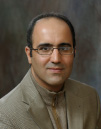
Saeed Moghaddam
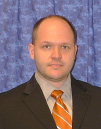
Shawn Putnam

Ravi Prasher
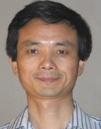
Renwei Mei
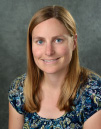
Elisa Toulson

Karen Thole
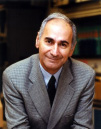
Massoud Kaviany

Sidy Ndao

Ronggui Yang
Affiliation: Knox T. Millsaps Associate Professor, Department of Mechanical and Aerospace Engineering, University of Florida
Title: A New Paradigm for Understanding and Enhancing the Critical Heat Flux (CHF) Limit
Abstract: Nearly a century of research on enhancing critical heat flux (CHF) has focused on altering the boiling surface properties such as its nucleation site density, wettability, wickability and heat transfer area. But, a mechanism to manipulate dynamics of the vapor and liquid interactions above the boiling surface as a means of enhancing CHF has not been proposed. In this talk, implementation of a new approach will be presented to limit the vapor phase lateral expansion over the heat transfer surface and actively control the surface wetted area fraction, known to decline monotonically with increasing heat flux. This new degree of freedom has enabled reaching unprecedented CHF levels and revealed new details about the physics of CHF. The impact of wickability, effective heat transfer area, and liquid pressure on CHF is precisely quantified. Test results show that, when rewetting is facilitated, the CHF increases linearly with the effective surface heat transfer area. A maximum CHF of 1.8 kW/cm2 was achieved on a copper structure with the highest surface area among all tested surfaces. A model developed based on the experimental data suggests that the thermal conductivity of the surface structures ultimately limits the CHF; and a maximum CHF of 7–8 kW/cm2 may be achieved using diamond surface structures.
Bio: Dr. Saeed Moghaddam is Knox T. Millsaps Associate Professor at the University of Florida. He received his Ph.D. in Mechanical Engineering from the University of Maryland at College Park in 2006. Before joining the University of Florida in 2010, he was a postdoc in the Chemical and Biomolecular Engineering Department at UIUC (2007-2010). Dr. Moghaddam’s research has been published in nearly 100 peer reviewed articles and featured in Heat Pumping Technologies and New Scientist magazines, Nano Science and Technology Institute (NSTI) Innovation Spotlight, Nature Nanotechnology News & Views, and 2010 Guinness World Records for development of the world’s smallest fully functional fuel cell with an on-board self-regulating hydrogen generator. Dr. Moghaddam’s research is funded by ARPA-A, DARPA, DOE, NSF, NIH, SRC, ORNL, and private companies.
Affiliation: Assistant Professor, Mechanical and Aerospace Engineering, Interfacial Transport Laboratory, University of Central Florida
Title: Deciphering the Fundamental Limits of Micro- and Nano-Scale Heat and Mass Transport
Abstract: Transient heat fluxes in cutting-edge computing systems, electro-magnetic switches, and diode-pumped lasers can exceed 50 MW/m2, which is nearly the heat flux radiated by the Sun. To manage extreme thermal loads, the State-of-the-Art is to boil and evaporate liquid coolants on micro- and nano-structured heat sinks. However, a major technical challenge coincides with the reality that modern cooling techniques cannot manage extreme heat fluxes under transient conditions. For example, thermo-fluid transients due to on/off device operation or system exposure to an extreme environment result in highly unstable thermo-fluid behavior, ultimately placing a liquid-cooled device in danger of catastrophic failure via thermal runaway -- i.e., a rapid, uncontrolled increase in device temperature.
This talk will cover the Research Groups’ journey in understanding the fundamentals of micro- and nano-scale heat and mass transport at liquid interfaces. In particular, liquid interfaces exposed to different heating and flow-field conditions. A majority of the talk will describe the application of optical pump-probe diagnostics to characterize the local, transient heat transfer coefficient in confined geometries. For example, the local, transient heat transfer coefficient (HTC) that corresponds to (1) a developing thermal boundary layer over a micron-sized hot-spot and (2) bubble ebullition during subcooled flow boiling in a microchannel heat sink. In particular, a differential form of the anisotropic Time-Domain Thermoreflectance (TDTR) technique was developed to measure the HTC as a function of flow-field velocity, hot-spot heat flux, and degree of subcooling. The talk will also briefly discuss some of the other efforts by the research group coupled to optical diagnostics and biological systems
Bio: Shawn Putnam joined the Mechanical and Aerospace Engineering Department at the University of Central Florida (UCF) in 2012. A native of the northern logging town of Cloquet, Minnesota, Dr. Putnam received B.Sc. degrees in 2001 in both Physics and Applied Mathematics from the University of Minnesota, Duluth. In 2007, he received his Ph.D. in Materials Science and Engineering (MSE) from the University of Illinois Urbana-Champaign (UIUC). His Ph.D. research focused on the thermodiffusion and thermal conductivity of nanoparticle suspensions. Following his Ph.D. studies, Dr. Putnam served as the lead thermal and materials scientist at the Air Force Research Laboratory (AFRL) at Wright-Patterson AFB in Dayton OH. His postdoctoral work at AFRL broadened the use of optical pump-probe diagnostics for micro-/nano-scale studies of thermo-fluid transport at liquid interfaces. While at AFRL, Dr. Putnam was also a part-time lecturer at University of Dayton in Dayton OH. His expertise spans a multidisciplinary skill set in thermo-fluid sciences, optical metrology, and materials science and engineering. His current research at UCF focuses on interfacial phenomena using optical diagnostics to characterize biomolecular binding and heat and mass transport at liquid interfaces, where the latter is currently funded by the NSF CAREER award, the Binational Science Foundation, and the Office of Naval Research (ONR) Thermal Sciences program. In addition of his research endeavors, Dr. Putnam has a passion for pioneering improved student education and training methodologies via the incorporation of digital testing centers and assessment, project-based learning modules, and elements of mixed-mode instruction.
Affiliation: Scientific Division Director, Energy Storage and Distributed Resources Division, Lawrence Berkeley National Laboratory
Title: New and Emerging Applications of Nanoscale Thermal Science and Engineering
Abstract: It has been almost three decades since Nanoscale Thermal Science and Engineering became a well-established research field. Various major breakthroughs in fundamental understanding of thermal transport at nanoscale have been achieved in these three decades, however, the impact of these fundamental insights have been primarily targeted for microelectronics and thermoelectrics applications. In this talk, the speaker will provide examples of other applications such as Lithium ion battery thermal management, building thermal insulation, and highly stable high temperature selective solar absorber where nanoscale thermal science has a significant role to play. For example, it is well known that effective heat dissipation in batteries is important for a number of reasons, such as performance, reliability, safety and fast charging. Currently, thermal management of battery cells is provided at the system level by either forced air or liquid cooling. This engineering solution has many shortcomings, such as a reduction in the energy density at the system level and complex system level designs that allow for fluid flow. A better understanding of thermal transport inside battery cell including all the interfaces such as cathode/separator interface can enable a much simpler thermal design. Thermal transport inside the battery cell is inherently at nanoscale as it is mostly dominated by thermal interfaces.
On the other hand, for high temperature applications, a highly stable selective solar absorber can be a game changer for concentrated solar power as high temperatures can enable higher thermal-to -electrical conversion efficiency. Selective solar absorbers can be easily designed using nanoscale multilayer thin films, however, stability and reliability at high temperature has been a major issue. Using materials stable at high temperatures, speaker’s group has recently developed a nanostructured selective solar absorber that is highly stable up to a temperature of 900 °C.
Bio: Ravi Prasher is the director of Energy Storage and Distributed Resources Division (ESDR) at LBNL. ESDR conducts R&D in energy conversion, storage and distribution. Ravi is also an Adjunct Professor in the Department of Mechanical Engineering at University of California, Berkeley. Prior to joining LBL, Ravi was the VP of product development of Sheetak Inc., a startup developing thermoelectric energy converters. Ravi was also an adjunct professor in the school of engineering at ASU from 2005 – 2013. Ravi earlier worked as one of the first program directors at ARPA-E which was started by Dr. Steven Chu (Energy Secretary in the Obama administration and 1996 Physics Nobel Prize Winner). At ARPA-E, Ravi created two programs on cooling/heating of buildings and thermal storage for applications ranging from climate conditioning of electric vehicles and high temperature solar thermal power plants. Prior to joining ARAP-E, Ravi was the technology development manager of the Thermal & Fluids core competency group at Intel. Ravi is a recipient of an Intel Achievement Award, Intel’s highest technical recognition. Ravi has published more than 85 archival journal papers and holds more than 30 patents. He is a fellow of ASME and senior member of IEEE. He is on the editorial committee of multiple journals including Annual Reviews of Environment and Resources and ASME Journal of Heat Transfer. Ravi obtained his B.Tech. from IIT Delhi and Ph.D. from Arizona State University.
Affiliation: Professor, Department of Mechanical and Aerospace Engineering, University of Florida
Title: Handling Boundary Condition Discontinuities in Lattice Boltzmann Method for Thermal Fluid Flow Problems
Abstract: Lattice Boltzmann method (LBM) is an effective alternative computational method to solving thermal and fluid flow problems. It has been widely studied and applied for many different types of flow and thermal problems in the last three decades because of its flexibility in handling complex geometry, intrinsic spatial second order accuracy, and ease in parallel implementation. In this work, we focus on issues related to discontinuities in the boundary conditions in solving energy equation (based on convection-diffusion transport equation) and momentum equations (Navier-Stokes equation) using various lattice formulations, with the main emphasis on the energy equation. A short review on the practical approaches for implementing the Dirichlet and Neumann conditions on curved boundaries is given. The order of accuracy for the temperature field and heat flux field is discussed. The subsequent combination of Dirichlet and Neumann boundary condition treatment leads to an accurate LBM formulation for solving conjugate heat and mass transfer problems. Three types of discontinuity in the boundary condition are considered. The first involves jump conditions across an interface in the heat and mass transfer problems. Spatial second order accuracy can be obtained. The second type involves discontinuous temperature or heat flux distribution along the boundary. Degradation in the order of accuracy occurs as a result of this tangential discontinuity along the boundary. The third type involves corner singularity where different types of boundary conditions are encountered at the intersection of walls. For solving 2-D convection-diffusion equations, D2Q5 lattice model is preferred over D2Q9 model as the former can easily bypass the singularity at the corner while the latter requires special attention in order to obtain spatial second order accuracy. Guidelines for implementing D2Q9 lattice model at the singular corners are proposed for solving both fluid momentum equation and convection-diffusion equation. Second order accuracy are obtained for steady conduction problem and 2-D lid-driven cavity flow at finite Reynolds number.
Bio: Dr. Mei is a Professor of Mechanical and Aerospace Engineering at the University of Florida. He received his Ph.D. from the University of Illinois at Urbana-Champaign in 1990. He has engaged in research in the areas of multi-phase flow and computational fluid dynamics. Some of his research topics include theoretical and computational analyses of the equation of motions of particle and bubbles at finite Reynolds number in fluid flows, dispersion and collision of particles in turbulent flows, nucleation, growth and departure of vapor bubbles near the heating surface, simulation of dense powder flows, desalination, lattice Boltzmann method for fluid flow and heat transfer, hydrogen production using water-splitting looping process, solar thermalchemical fuel production via non-volatile iron looping process. He was YK Pao Chair Professor in the College of Energy Engineering at Zhejiang University in China. He is currently on editorial board of Acta Mechanics Sinica and International Journal of Multiphase Flows.
Affiliation: Assistant Professor, Department of Mechanical Engineering, Michigan State University
Title: Turbulent Jet Ignition for Improved Fuel Economy and Emissions
Abstract: The United States’ increasingly stringent fuel economy standards require the development of new more fuel efficient combustion technologies as large gains with conventional spark ignition combustion decline. Turbulent Jet Ignition is an advanced pre-chamber initiated combustion system that replaces the spark plug in a standard spark ignition engine and enables very fast burn rates due to the ignition system producing multiple, distributed ignition sites, which consume the main charge rapidly and with minimal combustion variability. The large number of distributed ignition sites ensures that the flame travel distances are relatively small, enabling short combustion durations even in traditionally slow burning lean and dilute mixtures. Research has shown that these faster burn rates allow for a base compression ratio increase when compared to spark ignition and when combined with diluted mixture combustion, provide a near 20% peak thermal efficiency improvement relative to spark ignition combustion, resulting in both lower fuel consumption and CO2 emissions.
Bio: Dr. Elisa Toulson is Assistant Professor in the Department of Mechanical Engineering at Michigan State University. Prior to this she completed a postdoctoral appointment at Michigan State University’s Energy and Automotive Laboratory. Her PhD was awarded in 2008 from the University of Melbourne on the topic of applying alternative fuels to the jet ignition process through both experimental engine testing and CFD modeling. She has published over 40 archival papers and has recently been awarded the Society of Automotive Engineers Myers and Teetor awards. Dr. Toulson’s research interests include combustion, ignition and chemical kinetics with an emphasis on alternative and next generation renewable fuels.
Affiliation: Distinguished Professor and Department Head, Mechanical and Nuclear Engineering Department, Pennsylvania State University
Title: Exploiting Additive Manufacturing for Convective Cooling
Abstract: Recent technological advances in the field of additive manufacturing (AM) have widened the design space for complex convective cooling designs. Using additive manufacturing allows for increasingly small and complex geometries to be fabricated with little increase in time or cost. The opportunity for the heat transfer community is to exploit the use of additive manufacturing in re-thinking cooling schemes for components. Two topic areas related to the use of additive manufacturing for convective cooling schemes will be discussed including roughness effects and optimization of wavy microchannels. Interesting roughness features result when using laser powdered bed fusion (LPBF), which is a common additive manufacturing technique. The inherent roughness, in fact, can be used to improve convective heat transfer beyond that of engineered cooling designs. For example, when considering engineering cooling designs such as microchannels and pin fins, the resulting roughness from the additive process significantly enhances convective cooling. Roughness features can be controlled based on build direction, channel shape, and on build parameters. Numerically optimized geometries, such as wavy microchannels, can now be manufactured using additive such that new designs can be tailored to minimize pressure loss or maximize heat transfer.
Bio: Dr. Karen A. Thole is a Distinguished Professor and Head of the Department of Mechanical and Nuclear Engineering at The Pennsylvania State University. She is the founder of the Steady Thermal Aero Research Turbine Laboratory (START) lab, which focuses on gas turbine heat transfer and is a center of excellence for a major turbine engine manufacturer. She has published over 200 archival papers and advised 70 dissertations and theses. She is currently a nominee to the ASME Board of Governors. Dr. Thole co-founded the Engineering Ambassadors, which is a professional development program with an outreach mission. She was recently recognized as SWE’s 2014 Distinguished Engineering Educator and in 2015 with ASME’s George Westinghouse Gold Medal and the Edwin F. Church Medal. She holds two degrees in Mechanical Engineering from the University of Illinois, and a PhD from the University of Texas at Austin.
Affiliation: Professor, Department of Mechanical Engineering and Applied Physics Program, University of Michigan
Title: Toward theoretical maximum saturated-boiling heat flux: a boiling metamedium
Abstract: The maximum theoretical boiling heat transfer rate is set by interface unidirectional thermal vapor flux, and quest continues for achieving a high fraction of it under saturated liquid flow. We introduce the flow-boiling canopy wick (FBCW) employing film (meniscus) evaporation and perforated screenlayer separating the liquid stream from the underlying vapor space. The vapor vents continuously through periodic perforations, in contrast to plain surface which becomes completely covered by vapor at high heat flux. The FBCW allows streamwise liquid tracks on the screenlayer between perforations providing capillary liquid flow toward heated surface and evaporation on high-effective-conductivity monolayer wick. Under extreme heat flux, various hydrodynamic limits prevent liquid supply and vapor removal, i.e., the capillary-viscous, wick superheat, perforation pressure drop and chocking and liquid-vapor stability limits. The liquid and vapor inertia control the streamwise continuous liquid track (with isolated and/or merged vapor track) and for saturated water at 1 atm CFD and wick pressure drop predict heat flux up to 20 MW/m2, an order-of-magnitude larger than the nucleate flow-boiling limit. The boiling metamedium replaces the chaotic nucleated bubbles with the structured, continuous vapor venting in the periodic FBCW transforms boiling heat transfer and its upper limit.
Bio: Massoud Kaviany (Ph.D. UC-Berkeley 1979) is Professor in Department of Mechanical Engineering and in Applied Physics Program, University of Michigan, since 1986. His interest is in heat transfer physics -- a multiscale research/education including energy carriers phonon, electron, fluid particle and photon, and multiphase systems such as porous media.
He has authored four books, including Principles of Heat Transfer in Porous Media, 2nd Edition, Springer, 1995 (over 3000 citations), Heat Transfer Physics, 2nd Edition 2014 and Essentials of Heat Transfer 2011, by Cambridge University Press. He was Chair of ASME Committee on Theory and Fundamental Research in Heat Transfer, is Associate Editor of Nanoscale and Microscale Thermophysical Engineering, ASME Lifetime Fellow and APS Fellow, and recipient of University of Michigan Engineering 2003 Education Excellence Award, ASME 2002 Heat Transfer Memorial Award (Science), 2010 Harry Potter Gold Medal (Thermodynamics Science), and 2013 Heat Transfer Division 75th Anniversary Medal.
Affiliation: Assistant Professor, Mechanical & Materials Engineering, University of Nebraska-Lincoln
Title: Thermal Computing: High Temperature NanoThermoMechanical Memory & Logic Devices
Abstract: The ability to control and manipulate heat transfer at the micro/nanoscale is of great interest to many engineering applications such as thermal management, energy conversion, and thermal computing. In this talk, I will present my lab’s research effort in tailoring and/or controlling radiative heat transfer and the micro- and nanoscale. I will specifically discuss our work in High Temperature Thermal Memory and Logic Devices. Limited performance and reliability of electronic devices at extreme temperatures and harsh environments requires the development of alternative computing technologies. Unlike electronics, thermal memory and logic devices use heat instead of electricity to record and process data. Memory function is achieved through the coupling of Near-Field Thermal Radiation and thermal expansion resulting in negative differential thermal resistance and thermal latching. Our research group has proposed and experimentally demonstrated the world first high temperature thermal rectifier based on near-field thermal radiation; we called it NanoThermoMechanical diode; a building block for performing logic operations in harsh and extreme environments. We fabricated and tested a proof-of-concept NanoThermoMechanical device that has shown a maximum rectification of 10.9% at terminals’ temperatures of 375 and 530 K. I will also discuss our most recent work on near-field heat transfer enhancement from microstructured meshed doped silicon photonic crystals, which have shown thermal rectifications as high as 2500%. We are basically creating the world's first thermal computer, and hopefully one day it will be used to unlock the mysteries of outer space, explore and harvest our own planet's deep-beneath-the-surface geology and harness waste heat for more efficient energy utilization.
Bio: Dr. Ndao is an Assistant Professor in the Department of Mechanical and Materials Engineering Engineering (MME) at the University of Nebraska-Lincoln (UNL). Before Joining UNL in 2012, Dr. Ndao spent about 2 years as a Postdoctoral Associate in the Chemical Engineering Department and the Institute of Soldier Nanotechnology at the Massachusetts Institute of Technology (MIT), in Cambridge, MA. He completed his Ph.D. studies in Mechanical Engineering at Rensselaer Polytechnic Institute (RPI) in 2010.
At UNL, Dr. Ndao is director of the Nano & Microsystems Research lab with research interest in Nanotechnology and Thermal-Fluid Sciences. He is interested in both fundamental and applied research in Thermal-Fluid Sciences, Energy and Nanotechnology with current research focus on energy conversion and thermal storage, nanoengineered surfaces, NanoThermoMechanical logic and memory devices, two-phase heat transfer, and microfluidics. His team has published many papers in peer-reviewed journals such as Nature, Applied Physics Letters, Langmuir, and IJHMT; and in international conferences. Dr. Ndao’s research group has recently developed the world’s first high temperature thermal rectifier, a building block for future High Temperature Thermal Memory and Logic Devices, i.e., thermal computer. Unlike electronics, thermal memory and logic devices use heat instead of electricity to record and process data. his research group has proposed and experimentally demonstrated the high temperature thermal rectifier based on near-field thermal radiation; they called it NanoThermoMechanical diode. Dr. Ndao was recently awarded the UNL College of Engineering Henry Y. Kleinkauf Family Distinguished New Faculty Teaching Award.
Affiliation: Full Professor, Department of Mechanical Engineering and Materials Science and Engineering Program, University of Colorado, Boulder
Title: Sustaining Dropwise Condensation on Superhydrophobic Micro/Nano-Structured Surfaces
Abstract: Condensation is a ubiquitous phase-change energy transfer process and has been widely used in energy-intensive industrial applications. By promoting rapid droplet removal, the micro/nanostructured materials offer an avenue to potentially improve condensation heat transfer performance. However, these approaches suffer from nucleation within the micro/nano-structures which results in flooding condensation at high heat flux and make it difficult to exceed the state-of-the-art dropwise condensation heat transfer. Here, we provide two novel strategies to enhance dropwise condensation heat transfer. To circumvent nucleation-induced wetting transition, we first exploit superhydrophobic surfaces with closely spaced hydrophobic copper nanowires, including straight nanowire arrays and 3-D nanowire networks, to control droplet nucleation occurring only on the top of nanowires for highly mobile droplets. A stable and efficient jumping droplet condensation is experimentally demonstrated in a wide range of surface subcooling (< 28 K), which results in a 100% higher heat flux compared to that on the plain hydrophobic surface. Taking into account the challenges in scalable manufacturing, we report an alternative micromesh-covered superhydrophobic surface via a simple and scalable fabrication method that allows for highly efficient jumping droplet condensation at small surface subcooling (< 4.5 K) and continuous droplet suction-enhanced condensation at large surface subcooling (> 4.5 K). We show that the unique surface morphology can lead to unprecedented condensation heat transfer enhancement compared to the plain hydrophobic surface. The new insights about the cost-effective surface fabrication and the novel condensation mechanism we discovered can help to guide the design of novel structured surfaces for phase-change heat transfer applications.
Bio: Dr. Ronggui Yang is a Full Professor of Mechanical Engineering at at the University of Colorado Boulder (CU-Boulder), directing the Nano-enabled Energy Conversion, Storage, and Thermal Management Systems (NEXT) group. Dr. Yang received his Ph.D degree focusing on Nanoscale Heat Transfer with Professor Gang Chen in Mechanical Engineering from MIT in February 2006. Since January 2006, he started his faculty career as an Assistant Professor, was promoted to Associate Professor in 2011 (2 years ahead of normal clock) and to a Full Professor in 2016. His innovative research has won him numerous awards including the 2014 ITS Young Investigator in Thermoelectrics from International Thermoelectric Society (ITS), the 2010 ASME Bergles-Rohsenow Young Investigator Award in Heat Transfer, an NSF CAREER Award in 2009, the MIT Technology Review’s TR35 Award and the DARPA Young Faculty Award in 2008. He has also won the Provost’s Achievement Award (2012), the Dean’s Performance Award (2010), the Woodward Outstanding Faculty of Mechanical Engineering (2011) and the Outstanding Research Award in Mechanical Engineering (2008) from the University of Colorado Boulder. Dr. Yang is also well recognized for his professional services for heat transfer community as conference organizers, committee chairs, and associate editors. He was elected as an ASME Fellow in 2015.
Donald Q. Kern Award
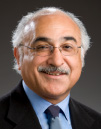
Afshin Ghajar
Affiliation: Regents Professor and John Brammer Endowed Professor, School of Mechanical and Aerospace Engineering, Oklahoma State University
Title: Gas-Liquid Two-Phase Flow in Inclined Systems
Abstract: The phenomenon of gas-liquid two-phase flow in inclined systems, although not as common as horizontal or vertical flow, is of great practical significance in several applications such as undulating oil-gas flow lines, chemical process engineering, inclined flow paths in steam condensers and generators. In these practical applications, accurate determination of two-phase flow variables such as void fraction, pressure drop and heat transfer is of great importance for system sizing and optimization. It is well established fact that these parameters are very sensitive to the spatial and morphological variations of the two-phase flow structure. The two-phase flow structure commonly termed as flow pattern, depends on the interaction and balance between the buoyancy-inertia-gravity forces which in turn are a function of pipe inclination. Thus, a correct understanding of the effect of change in pipe inclination on the two-phase flow structure is needed and its effect on the thermofluidics of two-phase flow needs to be understood. Thus, the scope of this lecture is to present an overview of the pipe inclination effects of the gas-liquid two-phase flow phenomenon.
The pipe inclination effects on non-boiling two-phase flow are studied through the data available in literature and extensive experiments carried out in Two Phase Heat Transfer Laboratory at Oklahoma State University. These experiments are carried out in two different test rigs of 0.5 inch and 1 inch I.D. respectively, using air-water as fluid combination. These experimental setups are unique as they can be inclined to in both upward and downward inclinations and are capable of flow visualization and simultaneous measurements of void fraction, pressure drop, and heat transfer. The experimental data show the flow pattern and pipe inclination dependency of all two-phase flow variables. At lower mass fluxes, this effect is found to be most significant where the two-phase flow phenomenon is dominated by the buoyant forces acting on the gas phase. Experiments also reveal the prevalence and insights about the flow reversal and transient nature of the two-phase flow in upward and downward inclined systems.
Two-phase flow literature reports a plethora of correlations/models for determination of void fraction, pressure drop and non-boiling heat transfer. Since the two-phase flow is a function of several variables such as flow patterns, fluid properties, and pipe diameter and inclination, it is quite a challenging task for the end user to select an appropriate flow condition specific correlation/model. Selection of a correct model also requires some fundamental understanding of the two-phase flow physics and the underlying principles/ assumptions/limitations associated with these correlations. To address these issues, this lecture also introduces some of the top performing two-phase flow models validated against a comprehensive data set.
Bio: Afshin J. Ghajar is Regents Professor and John Brammer Professor in the School of Mechanical and Aerospace Engineering at Oklahoma State University, Stillwater, Oklahoma, USA and a Honorary Professor of Xi'an Jiaotong University, Xi'an, China. He received his B.S., M.S., and Ph.D. all in Mechanical Engineering from Oklahoma State University. His expertise is in experimental heat transfer/fluid mechanics and development of practical engineering correlations. Dr. Ghajar has made significant contributions to the field of thermal sciences through his experimental, empirical, and numerical works in heat transfer and stratification in sensible heat storage systems, heat transfer to non-Newtonian fluids, heat transfer in the transition region, and non-boiling heat transfer in two-phase flow. His current research is in two-phase flow heat transfer/ pressure drop studies in pipes with different orientations, heat transfer/pressure drop in mini/micro tubes, and mixed convective heat transfer/pressure drop in the transition region (plain and enhanced tubes). Dr. Ghajar has been a Summer Research Fellow at Wright Patterson AFB (Dayton, Ohio) and Dow Chemical Company (Freeport, Texas). He and his co-workers have published over 200 reviewed research papers and 10 book/handbook chapters. He has delivered numerous keynote and invited lectures at major technical conferences and institutions. He has received several outstanding teaching, research, advising, and service awards from College of Engineering at Oklahoma State University. His latest significant awards are the 75th Anniversary Medal of the ASME Heat Transfer Division "in recognition of his service to the heat transfer community and contributions to the field", awarded in 2013, the ASME ICNMM 2016 Outstanding Leadership Award, this award recognizes a person whose service within the ICNMM (International Conference on Nanochannels, Microchannels, and Minichannels) is exemplary; the recipient of the award contributed significantly to the lasting success of the conference, and the 2017 Donald Q. Kern Award "in recognition of his extensive record of major contributions to the science and technology of heat transfer". Dr. Ghajar is a Fellow of the American Society of Mechanical Engineers (ASME), Heat Transfer Series Editor for CRC Press/Taylor & Francis (he has edited nine books to date), and Editor-in-Chief of Heat Transfer Engineering, an international journal published twenty times per year by Taylor and Francis. Heat Transfer Engineering is aimed at practicing engineers and specialists in heat transfer. Dr. Ghajar is also the co-author of the 5th Edition of Cengel and Ghajar, Heat and Mass Transfer – Fundamentals and Applications, McGraw-Hill, 2015.
Fax: +1 203 456 6167
© Copyright reserved ASTFE, 2025
www.astfe.org